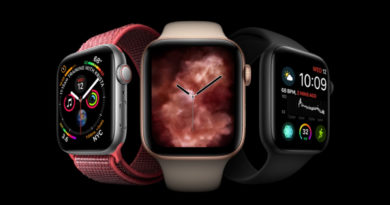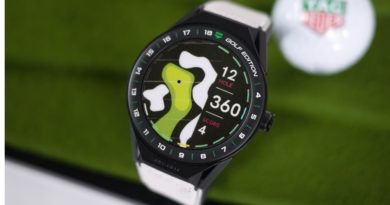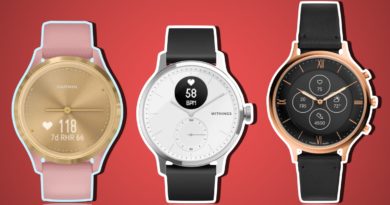Remembering the Pebble 1.0: The DNA inside modern smartwatches
There was a brief time, when wearing the original Pebble smartwatch meant sporting the hippest piece of consumer technology on the planet.The e-paper smartwatch debuted in April 2012 as the first true Kickstarter phenomenon. It was one of those products tech enthusiasts just love to show off, and perhaps the first wearable MVP.Read our original thoughts: Pebble smartwatch reviewPebble watches prefaced the era in which Apple makes the most popular watch on earth, by putting phone notifications at the centre of the experience and by ensuring time-telling was just one reason to glance at the wrist.
The first modern smartwatchAlthough Pebble heralded the dawn of the modern smartwatch era, it was far from the first to coin the term. In one form or another, the category dates back to 1927. Even Allerta, the company behind Pebble, had previously made the inPulse watch for BlackBerry phones, while Sony and Fossil were also dabbling.
However, Pebble does get due credit for being the first intelligent timepiece to fully align with the smartphone era; offering full iPhone compatibility and also playing nicely with Android. Indeed, so much of the functionality we come to expect from a 2019 smartwatch can be traced back to this device.
The first edition Pebble watch borrowed GPS from the phone for runners and cyclists, and leveraged a three-axis accelerometer to make it a viable alternative to early fitness trackers.
It enabled Bluetooth control of the most popular music apps from the wrist (especially handy because we all had speaker docks back then) and delivered smartphone notifications and caller ID. It also pioneered the way the companion smartphone apps could be used to deliver updates, new apps and fresh watch faces.
The black and white e-paper display enabled a five-day battery life, while an open SDK enabled developers to build apps, which saw heavyweights like Uber, Runkeeper, Misfit and TripAdvisor embrace the platform.
Sure, that plastic build had a cheap feel to it, and the display was a bit of a fingerprint magnet, but a logical button-based UI design meant you barely had to touch it anyway.
The 68,989 initial Kickstarter backers were suitably convinced by the proposition and placed $10,266,845 in Pebble’s coffers, amassing the funding goal 100 times over in just five weeks.
Unlike many Kickstarter campaigns of the era, it actually delivered without screwing over backers
That unprecedented success meant the watch got better before it even arrived, with Pebble upgrading from Bluetooth 2.1 to 4.0 and adding improved swim-proof water resistance (5ATM).
Nine months later those first Pebble watches began shipping to backers and the tech world sat up and took notice. Millions more sales followed and, for a while, things were looking really, really good.
“I think Pebble’s initial design really captured something that people wanted from a smartwatch and I believe is still core to the smart watch’s utility. The Pebble watch really hit home on the need to have a long battery life, to be able to always tell time and to give you your notifications in a non-intrusive manner.
“I think those fundamentals are still here with us today and most smartwatch makers still build devices to those fundamentals,” Anshel Sag, an analyst at Moor Insights & Strategy told Wareable.
Too many kick-startsRaising $1 million in 28 hours made Pebble the poster child for the Kickstarter generation, offering proof that anyone with an idea good enough, could stand-up to established industry players.
Initially, Pebble utilised Kickstarter to perfection. The company bypassed the slog of securing venture capital and avoided giving away chunks of equity to investors.
While the campaign raised the funds necessary to enter production, it also gave those first backers a sense of belonging, fostering a unique brand loyalty. A byproduct of the campaign was the incredible buzz it created, ensuring the watch was covered by every noted tech publication on Earth within days. And, most importantly, unlike many Kickstarter campaigns of the era, it actually delivered without screwing over backers.
This should have provided the platform for Pebble to kick on as a self-sufficient entity, which no-longer required kick-starting. But instead of passing the torch to the next generation of groundbreakers, it decided to compete with the little guy for that funding cash. More than once. Effectively, it began using Kickstarter as a pre-order mechanism, rather than a funding source for people who didn’t have one.
Granted, the company was making a pre-emptive strike against the pending launch of the Apple Watch, but it left a sour taste and sacrificed some of the goodwill the company had built with that initial release.Nonetheless, the Pebble Time and Pebble Steel broke Kickstarter records, closing at $20.3m after reaching the funding goal within minutes. It briefly left the platform for the Pebble Time Round launch in late 2015, but returned the following year, when the Alexa-enabled Pebble Core, Pebble 2 and Pebble Time 2 brought in $12.7m.
Had the likes of Samsung, LG, Moto, and the fitness device makers been the only competition Pebble faced, the company might still be around today. However, as soon as Apple arrived on the scene in April 2015, Pebble’s prospects sank.
While Pebble sold an estimated 130,000 watches in Q3 of 2016, Apple was shifting 2.8m. With just 2% of all smartwatch sales, the modern pioneer had been reduced to a tiny part of a fledgling market.
The company admitted defeat by selling to Fitbit for a mere $23 million in December 2016, six months after launching its final Kickstarter campaign, leaving many backers without the devices. Full refunds were promised, but some backers saw only partial repayments. The company, which had personified the positives of crowdfunding, finished-up as just another startup to overpromise and under-deliver.
It’s ironic that Fitbit was the company to bring Pebble’s journey to a close. In 2012, the pioneering startups were in a similar position. However, Fitbit found a way to adapt, diversify its appeal, relentlessly innovate and co-exist with the tech behemoths. So much so, it ended up buying a contemporary and spinning it into future plans. Sadly, those plans didn’t involve continued support for existing Pebble watches, which ended in 2018.
Pebble lives, in more ways than oneWhen Fitbit purchased Pebble, it absorbed some of the engineering team. If you’re wearing a Fitbit Versa or Ionic smartwatch today, it’s loaded with Pebble DNA as the Fitbit OS is essentially built atop the Pebble platform.
So, for the sentimental Pebble fan out there, it may be comforting to know that the defunct company is still effectively taking the fight to Apple and Google. For those burned by Kickstarter refunds, or the premature end of support for the platform, this may be scant comfort.
However, there is also life. The awesomely-named Rebble operating system, envisioned by Pebble employees the day the Fitbit sale was announced, has restored much of the original functionality. It maintains the 5-day battery life from an always-on display and delivers all the notifications you care about. If you pay $3 a month, you can get weather and voice recognition and dictation on supported watches. Eventually there could be an app store.
Essential reading: The complete guide to RebbleThanks to Rebble, which has the blessing of former Pebble CEO Eric Migicovsky, more than 100,000 Pebble users whose watches have successfully been brought back to life. Rocking a Pebble with Rebble effectively makes those original watches cooler than they’ve been since 2013. They are to smartwatches what those Casio calculator watches are to their digital counterparts.
“The funny part about the Pebble is that its design is so simple and timeless that it still works today while other smartwatches have come and gone. Simplicity is ultimately king,” Anshel Sag continued.And while Pebble has gone – its DNA is a huge part of modern wearables, and its legacy will endure far longer than its smartwatches.


